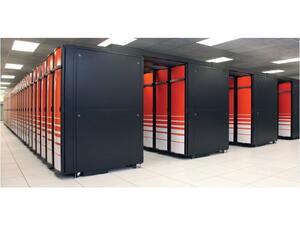Jaguar gives computational confirmation
Fusion energy research recently took a small step forward with a successful simulation performed on Oak Ridge National Laboratory's Jaguar supercomputer. A team led by C.S. Chang of New York University used the XGC1 code to verify that turbulence in the well-confined edge of plasma in a fusion reactor can penetrate the core and boost its temperature. This effect has been noted in experiments and expected in ITER, but until now the projections for ITER have been based on the coupling of more heuristic, thus experimentally based models for the edge turbulence suppression and its coupling to the core transport.
XGC1 models the kinetic energy within the plasma to obtain various transport properties, neoclassical and turbulent. Future plans include even more comprehensive kinetic calculations, detailed validation against experimental results, and applications to ITER.
This research was funded by the Department of Energy Office of Fusion Energy and Office of Advanced Scientific Computing Research.


